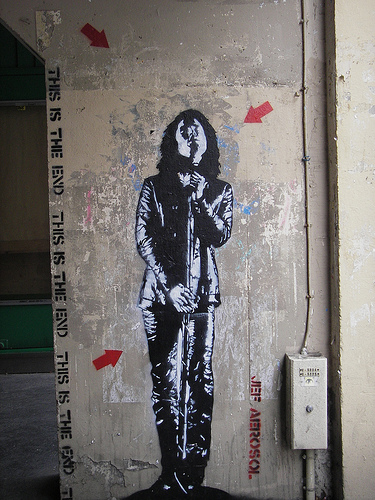
“The graffiti people should be hanged” – that is what I heard from a business owner in Lisbon, where graffiti is starting to take over nearly every inch of space in the Barrio Alto area of the city. Walking through the Barrio, the graffiti is so dominant that it starts to blend into the look of the streets as if it is a mélange of paint and shapes. In some ways, it gives the Barrio a unique and atmospheric feel while at the same time being messy and senseless. Mostly it's messy and senseless.
And so it is for a lot of Europe from our experiences. In nearly every city we have been saddened by the amount of graffiti sprayed onto walls with aerosol cans in languages that we mostly don’t understand – except the popular “Bush” reference. Some locals don’t really mind – it’s as if it is a part of living in the city. Indeed, it seemed that they had stopped noticing it and accepted it as normal and acceptable. For me, it is mostly not acceptable even realizing that graffiti has been around since the ancient Roman Empire.
I have enough of a counter-culture lean to like some forms of graffiti. It is an art form and there are incredibly talented people who do their work with aerosol cans and public walls. Unfortunately, these are the exceptions. 99% of the graffiti we’ve seen is not an attempt at art, but what appears to be late-night scribbles by disaffected individuals that wish to state publicly their discontent with politics, football, the environment, their personal lives, etc. This is the sad and ugly graffiti that plagues Europe.

There is of course, a beautiful side as we saw in Paris and Lisbon. Stencil graffiti, works done by spraying paint over a pre-cut piece of paper or cardboard, can produce artful, beautiful and interesting visual experiences. This is the graffiti I respect.

Jef Aerosol, in Paris has been doing stencil graffiti in Paris for a few years and we ran across some of his works just off Rue Mouffetard in the Latin Quarter.

In Lisbon we saw a few pieces that I really enjoyed – particularly this one of the painter covering himself.

A few others struck me too.

In Seattle, where graffiti is also a problem, there is a city law that business owners must cover graffiti within a set amount of days or face fines. As it turns out, Europe has similar laws and Britain has led the way with the Anti-Social Behavior Act of 2003 which was is similar to a piece of potential EU legislation with the aim to:
…eliminate dirt, litter, graffiti, animals' excrement and excessive noise from domestic and vehicular music systems in European cities, along with other concerns over urban life.
The sad reality from our perspective is that graffiti appears to be taking over the walls of Europe’s cities. Art, beauty, or not, I hope that something can be done because the experience of the visitor to these historic places is being altered in a way that reflects a feeling of degradation or mis-care. It appears that some cities are taking on the look of a “bad neighborhood” and nobody wants that.
Sometimes though, graffiti has a way of stating something that just wouldn't be as appropriate any other way...












Recent comments
3 years 4 weeks ago
3 years 8 weeks ago
3 years 8 weeks ago
3 years 14 weeks ago
3 years 20 weeks ago
3 years 24 weeks ago
3 years 31 weeks ago
3 years 38 weeks ago
3 years 38 weeks ago
3 years 41 weeks ago